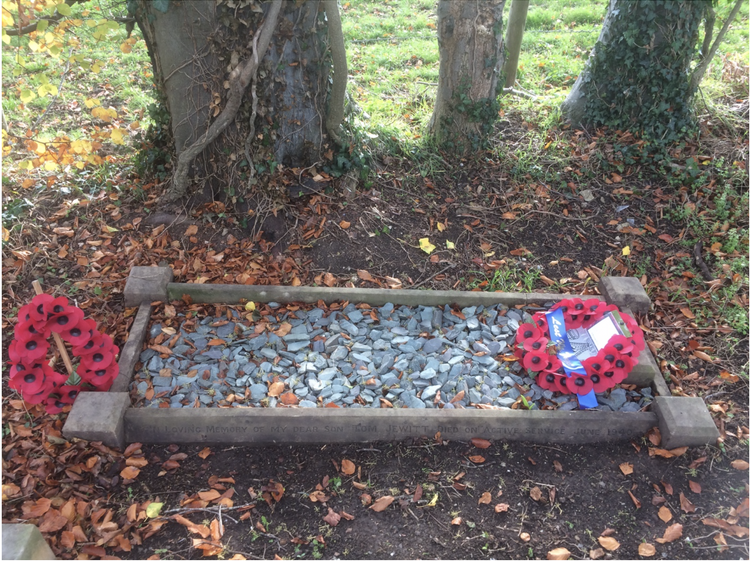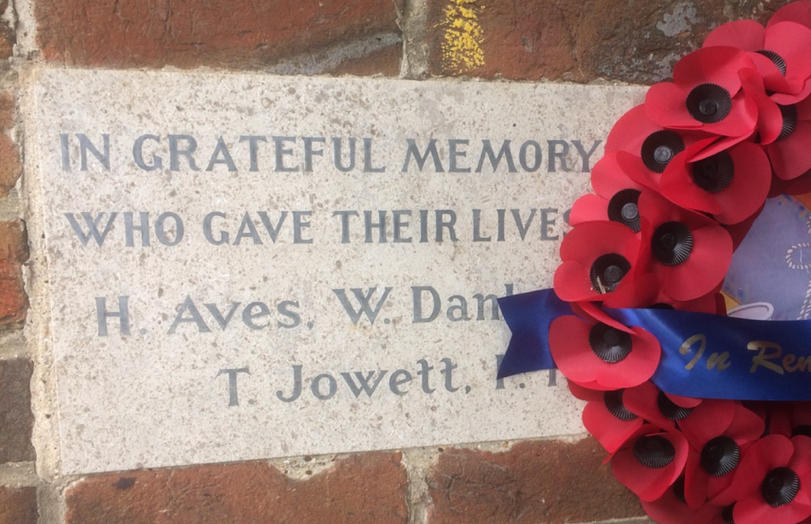Uncovering the past at Newnham Murren
Through these unprecedented circumstances, which saw our churches close for a time, churchyards took on new importance as outdoor spaces, as well as places of peace, remembrance, and occasionally - intrigue. Mike Chamberlain takes us through a recent (re)discovery at St Mary's Church, Newnham Murren and the story of a young man in wartime England.
We are but custodians of history who hand over our knowledge to the next generation, otherwise things are forgotten and nature will cover the evidence. Including churchyard gravestones, which are soon covered over by natures growth. Quite by chance, the Oxfordshire Home guard Historical Group tracked down a Local Defence Volunteer who had died on active service, with no known grave - until now.
During the Second World War, Germany’s initial strategy was to use Blitzkrieg (Lightning War) to quickly overrun an opponent in a series of short campaigns.
By June 1940 Adolf Hitler had orchestrated the defeat and occupation of Poland, Denmark, Norway, Belgium, the Netherlands, Luxembourg, and France. Great Britain stood alone and knew the threat of invasion was growing by the day.
The plan by Nazi Germany called 'Operation Sealion' was to gain control of the seas and skies around Britain to allow a land invasion in September 1940. This would have resulted in Hitler's complete domination of Western Europe. To assist his objectives within Britain there was an organisation in Great Britain called '5th Columnists' who sympathised and supported Hitler's cause. They schemed to disrupt Britain's war efforts by causing damage and chaos. For example, blowing up important bridges and damaging roads and/or the railway network.
Britain had her 'back against the wall', and every one was needed to help the nation defend itself. Things were very dire, and hasty measures were needed to bolster the war effort. Winston Churchill became Prime Minister on 10th May 1940, and four days later an announcement was made by Sir Anthony Eden calling for the formation of Local Defence Volunteers (LDV), which soon became known as the Home Guard. This organisation was an attempt to supplement the armed forces and Territorial Army at a local level.
In May 1940 Tom Jewitt lived in Crowmarsh Gifford, a small village in South Oxfordshire. He worked nearby at the Lister Wilder Foundry, and they formed a group of volunteers (LDV) to guard local key locations. On Saturday 1st June 1940 Tom had finished work and received news that men were needed to help guard sections of the railway line to prevent saboteurs inflicting damage.

The plan that night was to provide a group of volunteers to be in charge of the Berkshire side of the Cholsey Railway viaduct between Cholsey and Goring, along the Great Western Railway mainline network from London to Bristol. On the Oxfordshire side of the viaduct, a group from Oxfordshire LVD were assigned to patrol. This group consisted of Volunteer Roland Leonard Green (In charge of Oxfordshire side of the viaduct), Volunteer Tom Jewitt, Volunteer George Wheeler, and Volunteer Frank Wilder.
During the early hours of Sunday, June 2nd 1940 the Berkshire side sentry noticed that the sentry on the Oxfordshire side was absent from his post, and reported it to his Volunteer in Charge. The two men made a search and found a smashed rifle with the scattered remains of Volunteer Tom Jewitt, aged 31years. The Police and a Doctor were summoned.
The Inquest's verdict was that Tom's ‘death was due to shock due to injury caused by a passing train and that such injury was caused by misadventure’. The Coroner also remarked that 'it is too dangerous a task for inexperienced persons and should be performed by either railwaymen or persons who have knowledge of walking along railway lines'. Apparently, no instructions about walking along the lines had been given to the volunteers that night, during which there were frequent trains.
Tom's name was later recorded on the World War Memorial Stone at St Mary Magdalene Church in Crowmarsh Gifford, but his name had been wrongly engraved as 'Jowett'.

Tom’s grave was eventually located with the help of the Oxfordshire Home Guard Living History Group and Vicar Rev'd Kevin Beer at the nearby church of St Mary, Newnham Murren. This church is maintained by the Churches Conservation Trust.

The Commonwealth War Graves Commission has no record of Tom's death, but the OHGLHG has submitted the details, along with the Police and Coroner's reports for formal recognition. Funds have raised by and from the members of our Home Guard Living History Group, plus a donation from Tom Jewitt's niece, to have the church War Memorial corrected to read 'T Jewitt'.
Tom Jewitt's family were kept informed of the research, and a service of remembrance was held on 26th July 2020 to mark the 80th anniversary of his death. It is possible that Volunteer Tom Jewitt was possibly the first LDV to have 'Died on Active Service', and also very sadly on his first duty.
Volunteer Tom Jewitt now lies at rest within a stones' throw of a gravestone which remembers three men lost during the Great War, namely:
291365 Gunner T. Adams
109th Heavy Bty Royal Garrison Artillery
Died of wounds in France on March 21st 1918 aged 40 years
1558 Trooper Cecil H. Hilton
A Sqn 1st/1st North Somerset Yeomanry
Died of wounds in France on July 11th 1916 aged 21 years
200826 Private (A/Cpl) Harold Hilton
1st/4th Wiltshire Regiment
Killed in Palestine on April 10th 1918 aged 27 years
We are grateful to the following for their assistance:
Sjt Mike Quigley, Peter Salcombe, & Pte Paul Chambers from the Oxfordshire Home Guard (Living History Group).
Photos: John Hadfield.
Rev'd Kevin Beer and his team at St Mary Magdalene Church
Friends of St Mary group at Newnham Murren
Churches Conservation Trust - Patrick Joel, Lead Local Community Officer, West
Susie and Peter Ibbotson and all others who may have helped.

